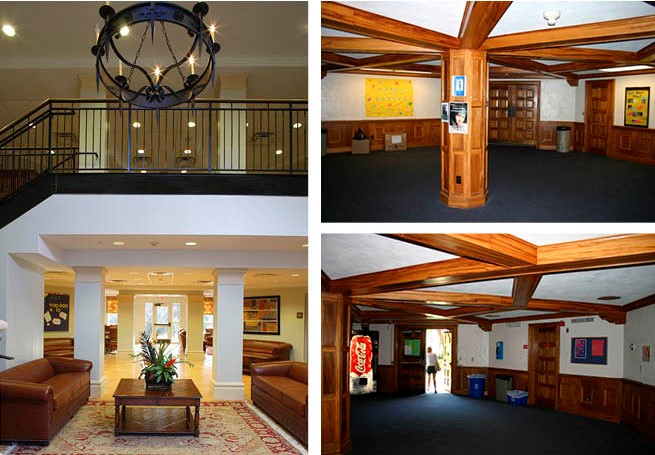What Matters Most to Students
As summer approaches, universities are prioritizing the small and large renovation projects across campus. Residence halls, which can be great recruiting tools since students will often make decisions about where they attend based on the kind of place they are going to live, are often near the top of the list.
Most of the universities where I’ve worked have residence halls that were built in a different era, for a different student demographic, and with a different outcome in mind. For these universities, preparing their 1960s facilities for the students of the 2020s is a daunting task.
The first priority, and lion-share of expenditure, is to maintain basic functionality – roofs, heating and cooling, accessibility, structural integrity, building envelope, etc. But if there is funding available for things beyond what students can see, where can limited funds be used that will make the biggest difference to students' everyday experience?
From my experience, here are four ideas that resonate with students no matter what class year or university they attend:
- A welcoming front door experience that feels like home. At many institutions, the main entry for a student residence is utilitarian – meant to receive residents and quickly eschew them into corridors or stairs. There are little to no community defining characteristics. One of the first things students tell us they're looking for is a place that feels like home, where community occurs. Investing in the front door experience is money well spent. The entry should be warm and inviting, offer opportunities to see and be seen, offer places to study or relax and should have a character that reflects the community it houses.
- Create a sense of identity for buildings and individual floors. Too often, residence halls are totally anonymous. Student staff are tasked with building community on their floors and one often sees personalized door tags and notices taped to walls. But students tell us that institutional or cultural identity are equally, if not more, important. This is especially true in public institutions that have large residence halls housing hundreds of students. Investing in creating scales of identity in residence halls helps students to manage their transition from home to campus and establish lifelong friendships and affinity with their alma mater.
- Flexible lounge and study space furniture. Too many institutions are locked into a "one size fits all" purchasing policy that encourages mass purchases of sturdy, albeit inflexible furniture. We visited one campus that had used the same "indestructible" furniture for over 30 years – and it looked it! Other campuses purchase hundreds of the same sofa and chair combination because of their durability and price point. While this approach is justifiable from a budgetary standpoint, students are a sophisticated user group. They will look all over campus for the kind of spaces that meet their needs. Today's students want to be alone in a crowd. They want to be a part of the action, yet insulated with their headphones. When they collaborate with a group, they want to move the furniture around, have whiteboards and big monitors to screen share.
- Celebrate heritage, culture, diversity and inclusion. Students tell us that it is important for their residence experience to celebrate institutional legacy, geographic location, community diversity and inclusion; but these reflections must go beyond the bulletin board at the elevator. Students suggest that spaces for dance, outdoor gardens and the use of art and artifacts to celebrate heritage in residence lounges and public spaces is important.

Small projects can happen over the summer. If you are considering larger renovations, be sure not to value engineer these aspects out of your project. These four simple actions can go a long way to helping students feel at home and to be at home in their residence on campus.
